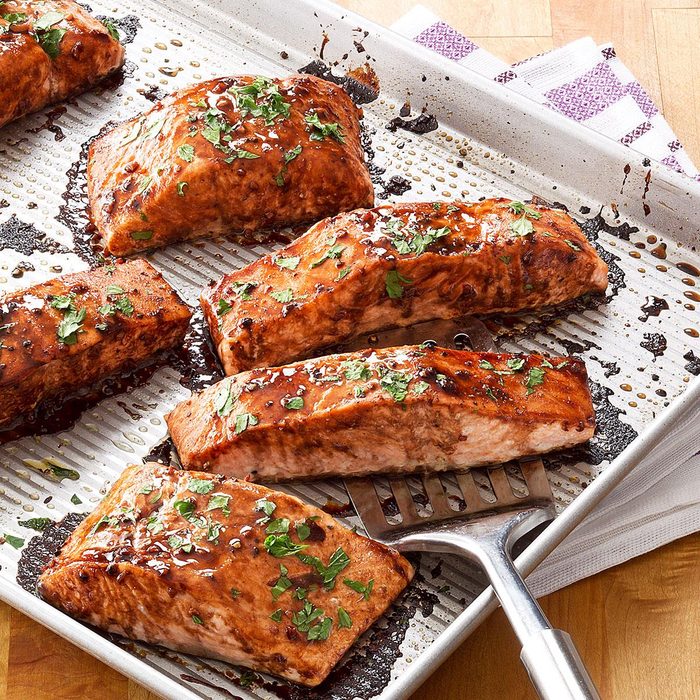Honey Balsamic Salmon Tips
How can you make honey balsamic salmon your own?
The easiest way to make honey balsamic salmon your own is to create variety with the herbs. We use oregano in the original recipe, but you could also use thyme, rosemary or sage. Adding citrus juice or zest to the marinade is another great way to infuse fresh flavors into the dish. If you want to use balsamic glaze in place of balsamic vinegar, keep in mind that balsamic glaze is already reduced, so you won’t need to simmer the sauce for as long until it thickens.
What do you serve with honey balsamic salmon?
You can serve a variety of
side dishes for salmon that match this sweet and tangy dish. Grains like couscous, orzo or quinoa add a fun textural contrast to the soft salmon, especially when they’re turned into salads with roasted vegetables. For a light meal, try serving the salmon with an arugula salad with a citrus-forward dressing. To accent the balsamic vibes, try serving the fish with other
recipes that use balsamic vinegar.
Can you make honey balsamic salmon ahead of time?
You can certainly make honey balsamic salmon ahead of time but be cautious when reheating to prevent overcooking the fish. Warming the salmon in a low-temperature oven (around 275°) when you’re ready to eat is a good way to create gentle heat without drying out the fish. Honey balsamic salmon also tastes great cold straight out of the refrigerator, although the sweet flavors will be a little more muted.
How do you store honey balsamic salmon?
Like most
salmon recipes, honey balsamic salmon should be stored in an airtight container in the refrigerator, where it is good for 2 to 3 days.
—Lindsay Mattison, Taste of Home Contributing Writer
Nutrition Facts
1 fillet: 319 calories, 17g fat (3g saturated fat), 85mg cholesterol, 323mg sodium, 9g carbohydrate (8g sugars, 0 fiber), 29g protein. Diabetic Exchanges: 4 lean meat, 1/2 starch, 1/2 fat.




















